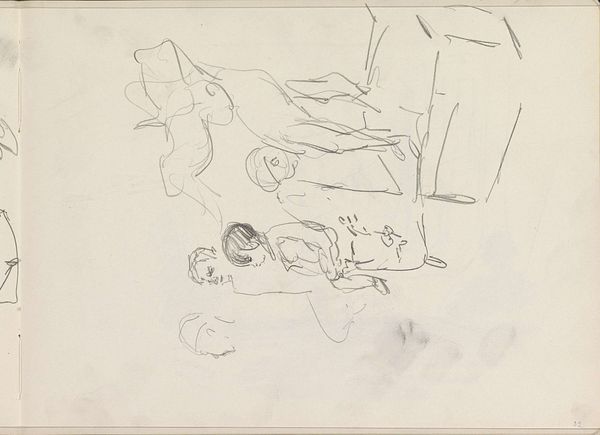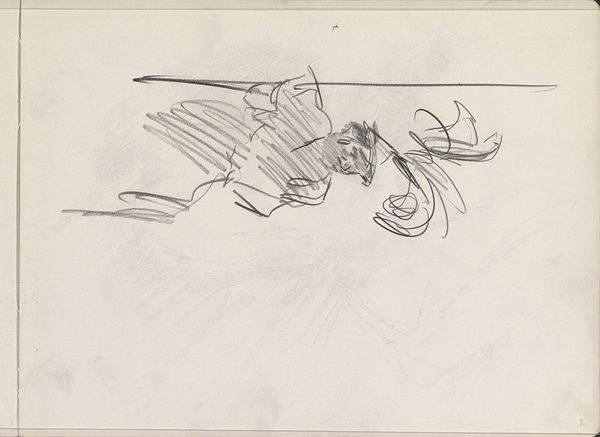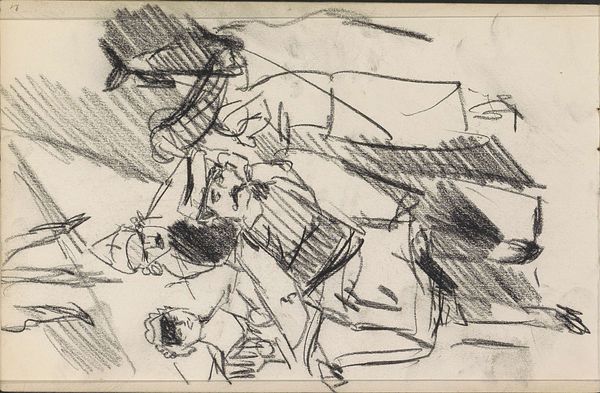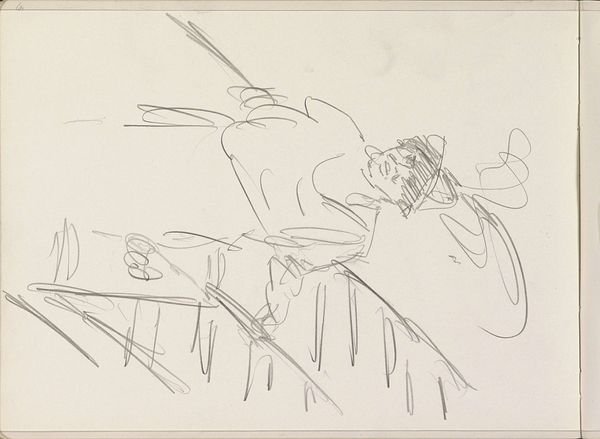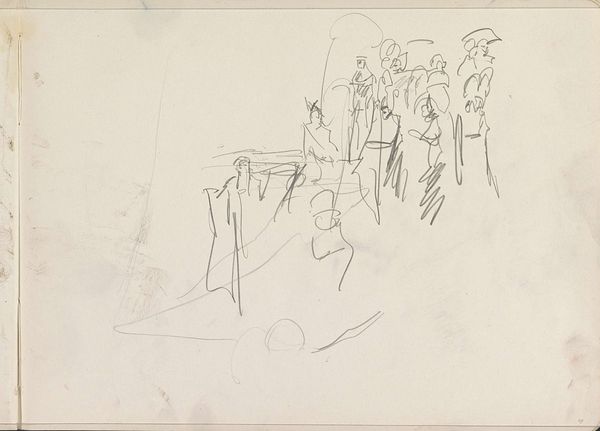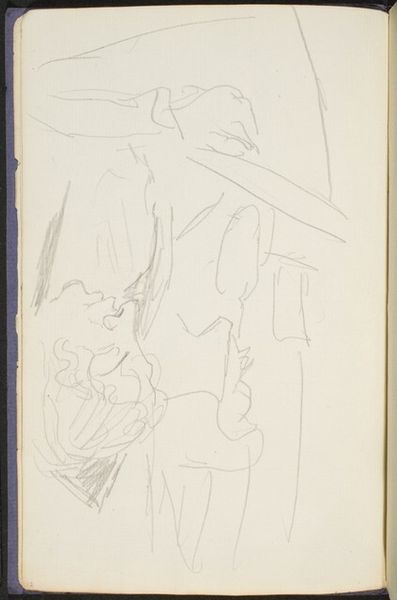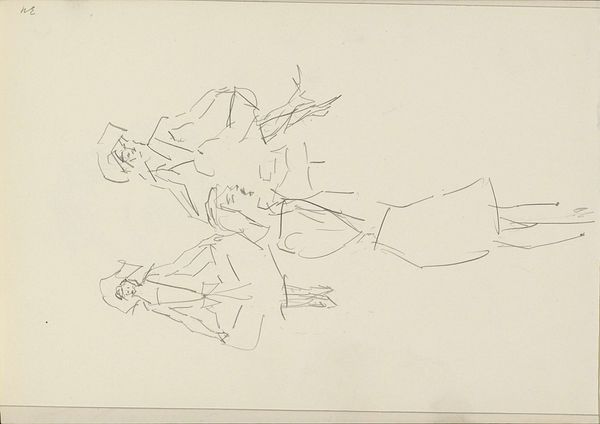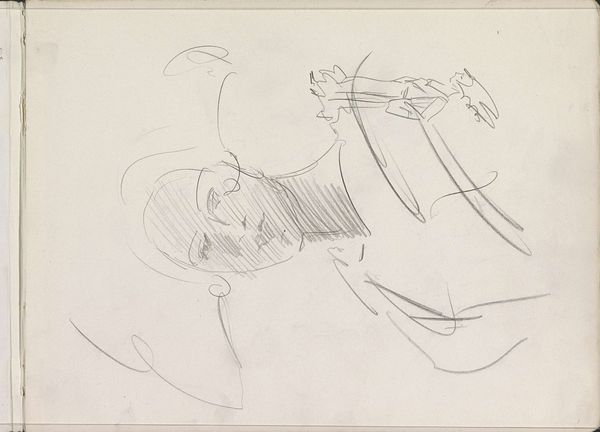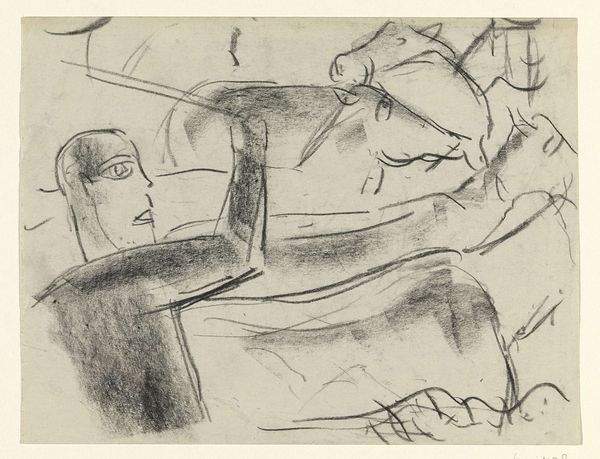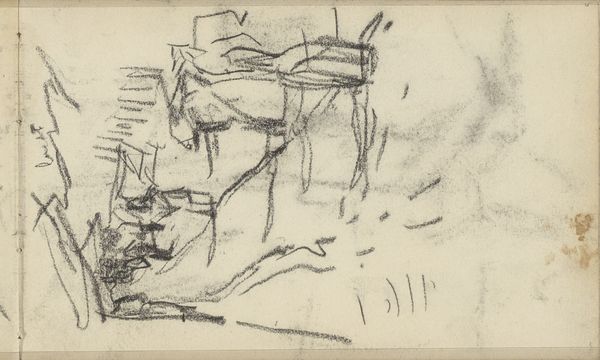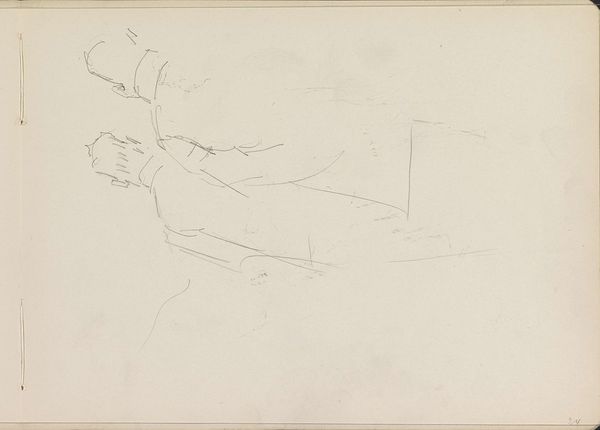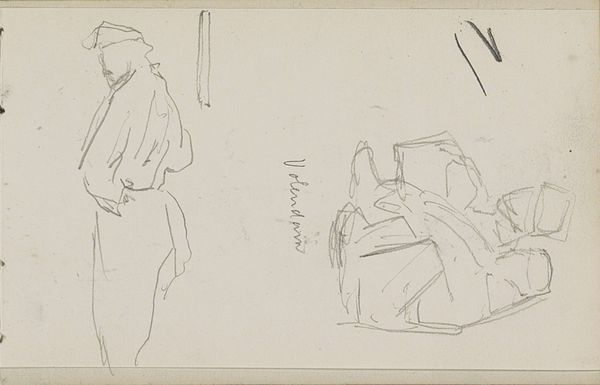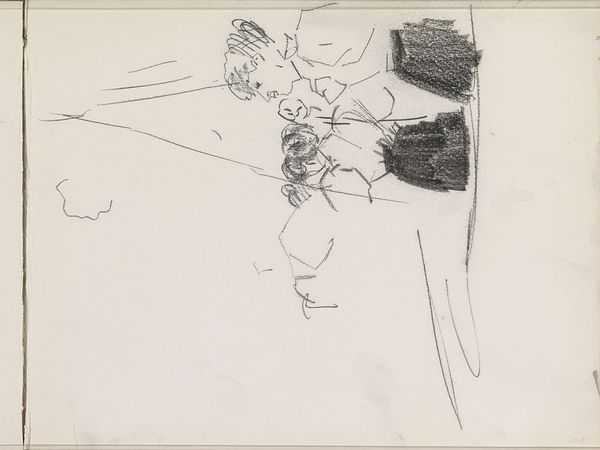
Copyright: Rijks Museum: Open Domain
Editor: So, here we have "Men in a Row, Possibly Musicians" by Isaac Israels, created sometime between 1915 and 1925. It’s a pencil drawing, and the figures are… quite vaguely rendered, almost like ghosts. How do you interpret this work? Curator: I see it as a fascinating glimpse into a specific social milieu and perhaps even a critical commentary on societal structures. Consider the implied setting—likely a performance venue. Who had access to these spaces in the early 20th century? And how does Israels's Impressionistic style either reinforce or challenge those power dynamics? Editor: That's interesting. I was just focused on the sketchiness, but the social context makes it much richer. What do you mean, specifically, about challenging power dynamics? Curator: Well, the unfinished quality might be read as a deliberate choice to subvert traditional, polished portraiture. Is Israels offering a counter-narrative by presenting these men, perhaps members of the upper class, in such an unrefined, almost fleeting manner? Editor: It does give a sense of the everyday, not some formal staged portrait. Are the men aware they’re being sketched? Curator: That's a great question. Think about the act of observation and representation. Is Israels empowering these subjects, or is he capturing them unaware, further solidifying his position as the artist, the observer? What is the power dynamic implied in the artistic choices? Editor: I never considered how the artistic style could be tied to such political and social ideas. Curator: Art is never created in a vacuum. Examining those intersecting layers—the aesthetic choices, the historical moment, and the implied power structures—that's where the real insights emerge. It definitely shifted how I initially viewed the piece!
Comments
No comments
Be the first to comment and join the conversation on the ultimate creative platform.
